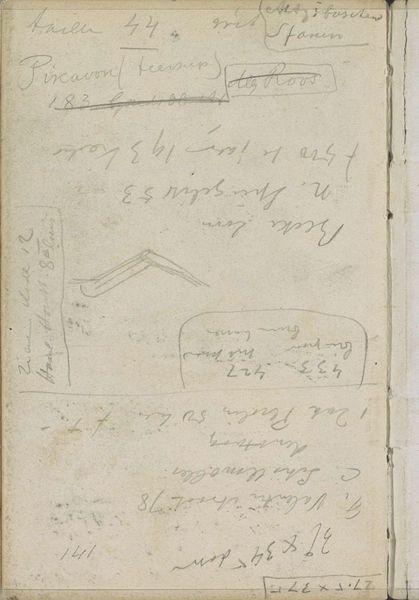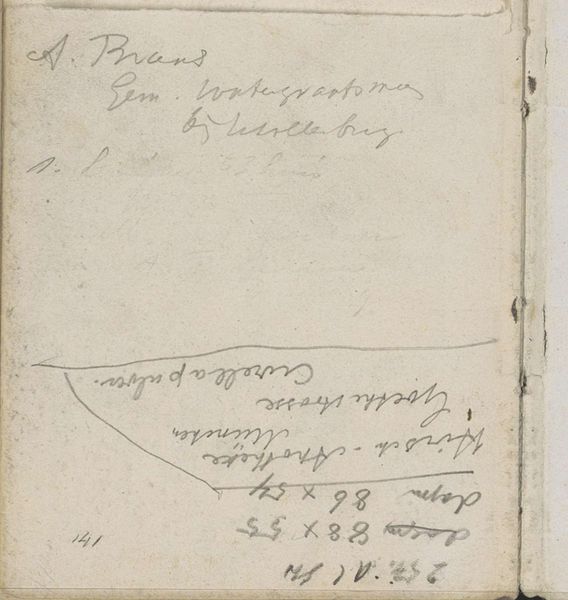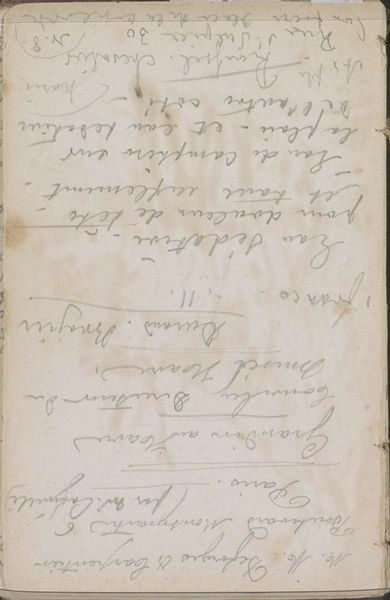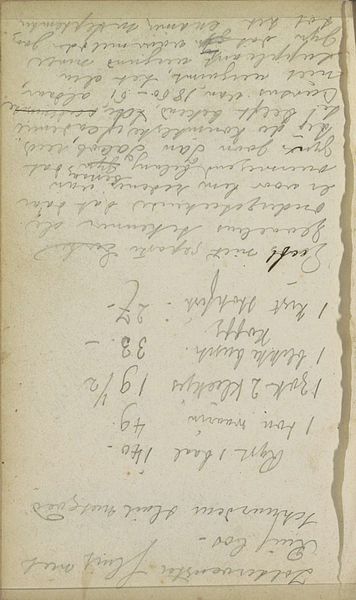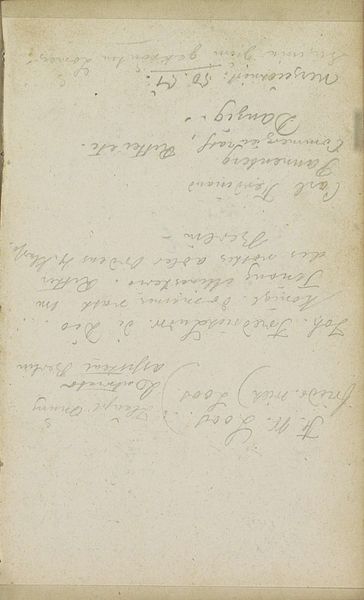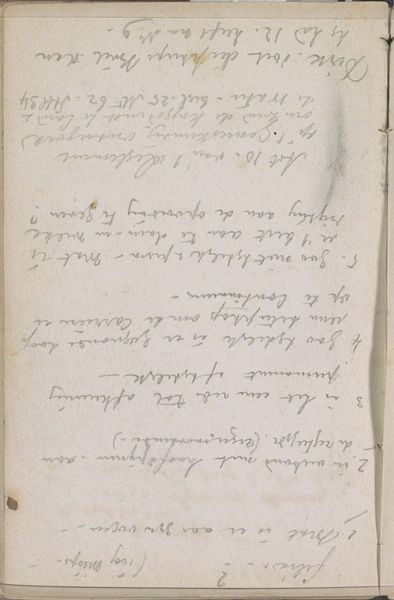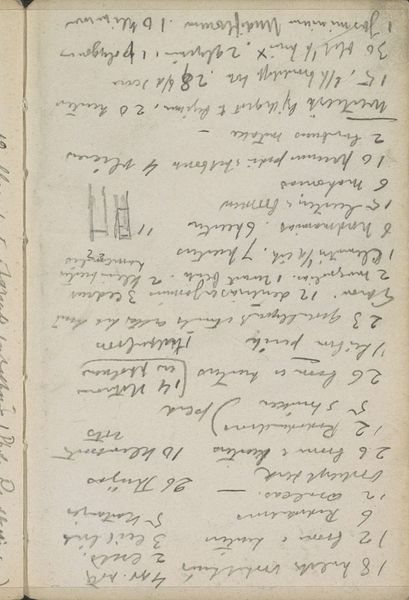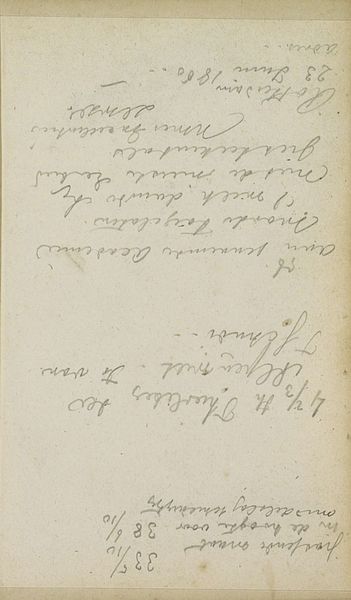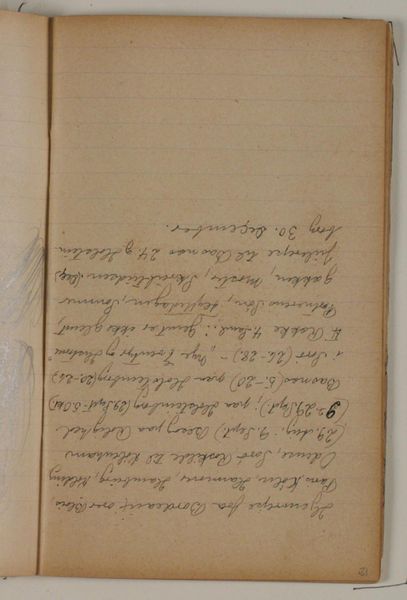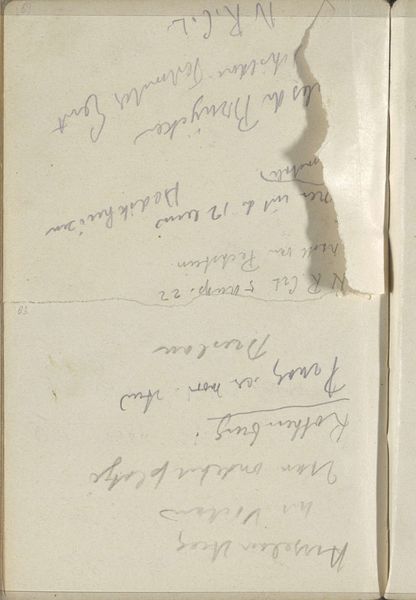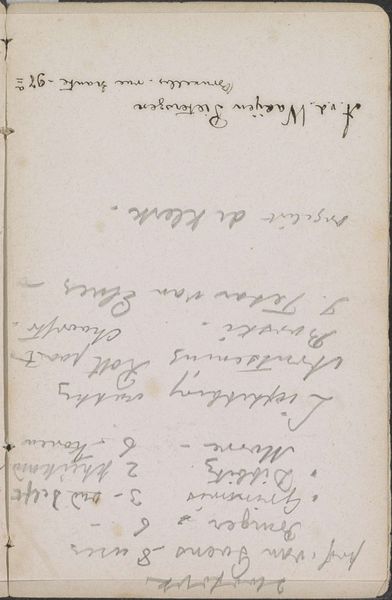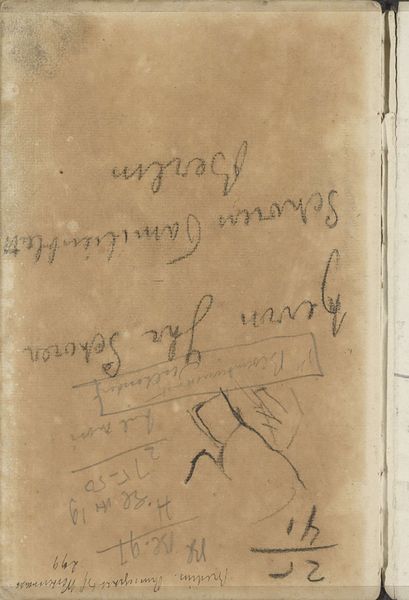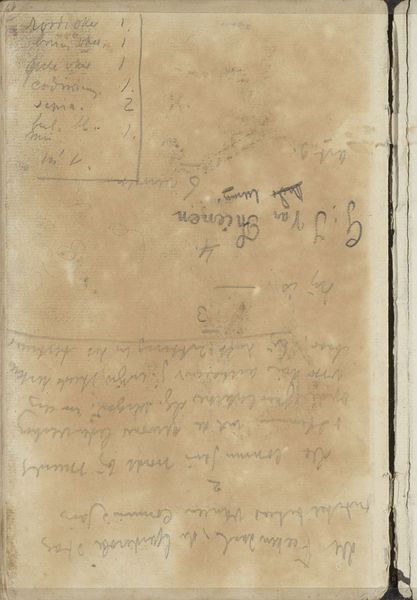
Copyright: Rijks Museum: Open Domain
Curator: Breitner's "Annotaties," dating from around 1900-1901, provides a fascinating window into the artist's creative process. This pencil drawing on paper, housed here at the Rijksmuseum, acts almost like a page torn from a diary. Editor: It's raw, isn't it? The immediacy of the lines gives it a powerful presence, despite being a sketch. I'm immediately struck by the sense of fragmentation. It's less about a completed view and more like captured glimpses. Curator: Indeed, and that speaks volumes about Breitner's social positioning. He was deeply engaged with the everyday realities of Amsterdam. As a flâneur, he captured transient moments, and he moved across social boundaries that afforded him specific observations of gender and class at the time. He was intensely interested in working-class women in Amsterdam, for instance, capturing what many art historical canons before often erased. Editor: I see the impressionistic spirit in that capturing of fleeting moments. Tell me, do you read that fragmented sensibility into the line work itself? Notice the light, almost hesitant pressure of the pencil? It creates an almost dreamlike image quality. Curator: Absolutely. His choices highlight how the individual navigates modernity. The unpolished feel disrupts conventional notions of beauty, aligning him with social movements pushing for visibility. There's a conscious effort to challenge established hierarchies through his representation of ordinary life, giving agency to previously ignored subjects. Editor: It makes me consider his contemporaries and predecessors: Manet or Degas, especially in their fascination with modern life. Looking at this sketch, the text jotted across the page—do we consider that merely annotation, or does it play a compositional role? How does this integration shape the drawing's structural dynamic? Curator: The text isn't just annotation; it’s intrinsic. It embeds the work within a specific time and context, resisting timeless readings. He invites viewers to become detectives piecing together the stories held within this one material sheet of paper, blurring art and life and inviting broader participation within the artwork's meaning. Editor: A reconstruction as lived experience. This piece makes you really appreciate how his subjective perceptions transformed ordinary scenes, it is incredible how it has this quality even in a mere drawing, in what most people would oversee as "something simple." Curator: Exactly. Breitner shows us that the revolutionary can be found not just in grand narratives, but also in the mundane corners of everyday life. Editor: A perfect note to end on. Thank you.
Comments
No comments
Be the first to comment and join the conversation on the ultimate creative platform.
